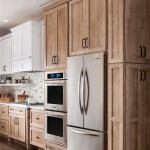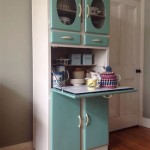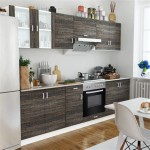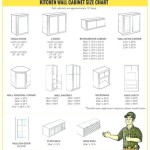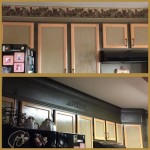Cleaning Kitchen Cabinets for Painting: A Comprehensive Guide
Proper preparation is paramount when undertaking a kitchen cabinet painting project. The adhesion and durability of the new paint finish are directly correlated to the cleanliness of the cabinet surfaces prior to application. Grease, grime, dust, and remnants of previous finishes can all impede proper bonding, resulting in peeling, chipping, and an overall unsatisfactory outcome. This article provides a detailed guide to effectively cleaning kitchen cabinets in preparation for painting, focusing on the necessary materials, techniques, and safety precautions.
The process of cleaning kitchen cabinets for painting is not merely about removing visible dirt; it involves a thorough degreasing and surface preparation that creates an ideal substrate for the paint to adhere to. Neglecting this crucial step can lead to significant long-term problems, potentially requiring costly and time-consuming repairs or a complete redo of the painting project. Therefore, understanding and executing the cleaning process correctly is essential for achieving professional-looking and long-lasting results.
Gathering Essential Materials and Tools
Before commencing the cleaning process, it is crucial to assemble all the necessary materials and tools. This proactive step ensures a smooth and efficient workflow and prevents unnecessary interruptions. The specific items required may vary slightly depending on the type and condition of the cabinets, but the following list provides a comprehensive overview of the typical essentials:
Cleaning Solutions: The selection of appropriate cleaning solutions is critical. Options include:
- Degreaser: A dedicated degreasing solution is essential for removing stubborn grease and oil buildup, particularly around cooking areas. Look for products specifically designed for kitchen use.
- All-Purpose Cleaner: A general all-purpose cleaner can be used for less heavily soiled areas and for rinsing residue from the degreaser.
- Trisodium Phosphate (TSP) or TSP Substitute: TSP is a powerful cleaner and degreaser, but due to environmental concerns, TSP substitutes are often recommended. Always follow manufacturer's instructions carefully when using TSP or its substitutes. Note: TSP or its substitutes may not be safe for all cabinet finishes; test in an inconspicuous area first.
- Mild Dish Soap: For lightly soiled cabinets or as a final cleaning step, a mild dish soap diluted in water can be effective.
Cleaning Implements: Choosing the right tools for application and scrubbing is equally important.
- Microfiber Cloths: These are excellent for wiping down surfaces without leaving lint or streaks. Have a plentiful supply of clean cloths on hand.
- Scrub Brushes: Non-abrasive scrub brushes are useful for tackling stubborn grime without damaging the cabinet finish. Different sizes and shapes can be helpful for reaching tight corners and crevices.
- Sponges: Sponges can be used for applying cleaning solutions and rinsing surfaces. Ensure the sponges are clean and non-abrasive.
- Toothbrush: An old toothbrush is ideal for cleaning intricate details and hard-to-reach areas around hinges, knobs, and moldings.
- Painter's Tape: Tape off areas that you do not want to be cleaned.
Protective Gear: Safety should be a primary concern when working with cleaning chemicals.
- Gloves: Wear rubber or nitrile gloves to protect your hands from harsh cleaning solutions and potential skin irritation.
- Eye Protection: Safety glasses or goggles are essential to prevent splashes from entering the eyes.
- Respirator or Mask: Depending on the cleaning solutions used, a respirator or mask may be necessary to protect against inhaling harmful fumes. Check the product labels for specific recommendations.
Other Useful Tools: Additional tools can facilitate the cleaning process.
- Buckets: Two buckets are recommended: one for the cleaning solution and one for rinsing.
- Drop Cloths or Plastic Sheeting: Protect countertops, flooring, and appliances from spills and splashes.
- Screwdriver or Drill: For removing cabinet hardware (knobs, pulls, hinges) to allow for thorough cleaning.
- Vacuum with Brush Attachment: Use to remove loose dust and debris before wet cleaning.
Step-by-Step Cleaning Procedure
Once all the necessary materials and tools are gathered, the cleaning process can begin. It is recommended to work methodically, cleaning one cabinet at a time to ensure thoroughness and prevent overlooking any areas.
1. Preparation: Begin by clearing the kitchen countertops and covering them, along with the floors and appliances, with drop cloths or plastic sheeting. Remove all items from inside the cabinets. Remove cabinet doors and drawers and place them on a protected surface. Disconnect or tape off any light fixtures near the work area. Remove all hardware, such as knobs, pulls, and hinges, and store them in a safe place. Label each piece of hardware to ensure correct reinstallation later.
2. Dry Cleaning: Use a vacuum with a brush attachment to remove loose dust, cobwebs, and debris from the cabinet surfaces, both inside and out. Pay particular attention to corners, crevices, and edges. This step prevents the dust from mixing with the cleaning solution and creating a muddy mess.
3. Degreasing: Apply the degreasing solution to the cabinets using a microfiber cloth or sponge. Focus on areas that are prone to grease buildup, such as around the stove and sink. Allow the degreaser to dwell on the surface for the recommended time specified on the product label, which typically ranges from 5 to 10 minutes. For stubborn grease, use a non-abrasive scrub brush to gently agitate the surface. Avoid excessive scrubbing, which could damage the cabinet finish.
4. Washing: After degreasing, wash the cabinets with warm water and an all-purpose cleaner or mild dish soap. Use a clean microfiber cloth or sponge to wipe down all surfaces, removing any remaining grease and degreaser residue. Change the water frequently to avoid spreading the grime back onto the cabinets. Alternatively, follow the manufacturer's label for direction on wiping the degreaser from the surface.
5. Rinsing: Thoroughly rinse the cabinets with clean water to remove any traces of cleaning solution. Use a separate bucket of clean water and a clean microfiber cloth or sponge. Ensure that all surfaces are free from soap residue, as this can interfere with paint adhesion. Note: If using TSP or a TSP substitute, extra care should be taken to rinse these chemicals completely.
6. Drying: Use clean, dry microfiber cloths to thoroughly dry all cabinet surfaces. Pay attention to edges, corners, and grooves, as any remaining moisture can compromise the paint finish. Allow the cabinets to air dry completely for at least 24 hours, or longer if the humidity is high. You can use a fan to accelerate the drying process.
7. Inspection and Spot Cleaning: After the cabinets are dry, carefully inspect them for any remaining dirt, grease, or imperfections. If necessary, repeat the cleaning process on specific areas. A spot cleaning with a mild abrasive cleaner may be required for particularly stubborn stains.
Addressing Specific Cabinet Materials and Conditions
The cleaning approach may need to be adapted based on the specific material and condition of the kitchen cabinets. Different materials require different cleaning solutions and techniques to avoid damage.
Wood Cabinets: Wood cabinets are generally more susceptible to damage from moisture and harsh chemicals. Avoid using excessive water or abrasive cleaners, which can warp or scratch the wood finish. Use a wood-specific cleaner or a mild dish soap diluted in water. Test any cleaning solution in an inconspicuous area first to ensure it does not damage the finish.
Laminate Cabinets: Laminate cabinets are relatively durable and easy to clean. Use a mild all-purpose cleaner or a laminate-specific cleaner. Avoid using abrasive cleaners or scrub brushes, which can scratch the surface. Be sure to wipe up any spills promptly to prevent staining.
Painted Cabinets: Painted cabinets should be cleaned with care to avoid damaging the paint finish. Use a mild dish soap diluted in water or a paint-safe cleaner. Avoid using harsh chemicals or abrasive cleaners, which can strip the paint. Test any cleaning solution in an inconspicuous area first.
Greasy Cabinets: Cabinets near the stove are often heavily coated in grease. A strong degreaser is essential for removing this buildup. Allow the degreaser to dwell on the surface for a longer period, and use a non-abrasive scrub brush to gently agitate the grease. Rinse thoroughly to remove all traces of degreaser.
Moldy Cabinets: If mold is present on the cabinets, it must be addressed before painting. Use a mold-killing cleaner specifically designed for this purpose. Follow the manufacturer's instructions carefully and wear appropriate protective gear, including a respirator or mask. Ensure the area is well-ventilated. After cleaning, allow the cabinets to dry completely before proceeding with painting. Note: If the mold infestation is extensive, professional remediation may be required.
Cabinets with Old Finishes: Cabinets with old, peeling, or damaged finishes may require additional preparation before painting. Consider sanding the surfaces to create a smooth, even substrate for the new paint to adhere to. Remove any loose or peeling paint with a scraper or sandpaper. Prime the cabinets with a high-quality primer to ensure proper adhesion and a uniform finish.
By adhering to these cleaning guidelines and tailoring the approach to the specific materials and conditions of the kitchen cabinets, a solid foundation for a successful painting project can be established. The result will be a beautiful, durable, and long-lasting finish that enhances the look and value of the kitchen.

How To Clean Prep Wood Kitchen Cabinets Before Painting Do Dodson Designs

How To Clean Painted Kitchen Cabinets By Kayla Payne

How To Clean Prep Wood Kitchen Cabinets Before Painting Do Dodson Designs

How To Clean Cabinets Before Painting Ace Hardware

My 6 Top Picks For Degreasing Kitchen Cabinets Before Painting

How To Clean Cabinets Before Painting Ultimate Guide With Pro Tips Grace In My Space

How To Clean Your Painted Kitchen Cabinets

How To Clean Prep Wood Kitchen Cabinets Before Painting Do Dodson Designs

The Best Way To Clean Kitchen Cabinets Before Painting In 2024

How To Clean White Kitchen Cabinets 3 Best Ways Avoid Abbotts At Home

